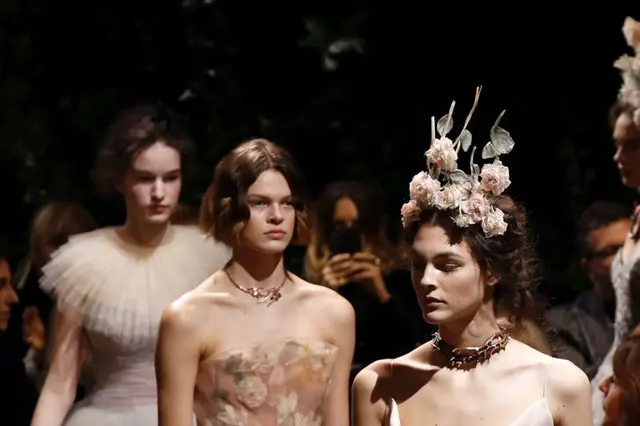The luxury goods sector is embracing cutting-edge technologies as fashion boutiques turn to virtual reality and artificial intelligence to woo shoppers.
The opportunity to experience exotic new worlds through a headset is believed to have broad-based consumer appeal.
French fashion giant Christian Dior has employed virtual-reality headsets to give buyers an immersive behind-the-scenes glimpse of its latest runway shows in Paris and Milan. Without jetting off to Europe, visitors can visit local boutiques and don a virtual-reality headset, known as Dior Eyes, to enjoy a front-row runway experience of the maison’s ready-to-wear haute couture collections.
Fashion labels Balenciaga and Tommy Hilfiger are also embracing the technology. Tommy Hilfiger will enable visitors to its Regent Street shop in London to enjoy an in-store virtual-reality experience tied to its autumn runway presentation.
“Through virtual reality, we’re now able to bring our one-of-a-kind fashion show to the retail setting,” Tommy Hilfiger said in a company statement.
The US fashion label said the use of virtual reality would “elevate” the traditional shopping experience for its smartphone-wielding clientele.
The likes of Dior, Balenciaga and Tommy Hilfiger believe consumers are not coming to their boutiques only to purchase, but rather for entertainment. The evolving dynamic is poised to be a game changer for the US$1.15 trillion luxury goods industry at a time when it is struggling with single-digit growth rates.
The key is to make affluent clients feel thrilled about their time spent in a luxury boutique.
“You need to build an emotional link to buyers using technology tools as they are now becoming more tech-savvy and sophisticated,” Francois Arpels, a managing partner with private equity firm IndEU Capital and shareholder of his family business Van Cleef & Arpels, told the South China Morning Post.
A 30-year veteran of the luxury industry, Arpels started his career as a member of the executive committee of the Paris luxury powerhouse, which itself stood out as an innovator with the launch of its namesake fine fragrance four decades ago – the first product crossover attempt by a premier jeweller.
“They want the experience that differentiates themselves from others,” Arpels said.
Virtual reality could bring catalogues to life and showcase how a particular product might appear in different settings. A high-end customer, for instance, might want to have an idea of whether her tailor-made gown looks good in wedding photos featuring the Eiffel Tower as background.
“When it comes to the consumer, some would say their expectations are becoming limitless, whether it’s instant delivery, intuitive commerce or compelling store experiences,” said Lucie Greene, director of the innovation group at J. Walter Thompson.
That means cutting-edge technologies once reserved for gaming are bound to become ubiquitous over time. According to Google statistics, searches for virtual reality jumped six times in 2016 from a year earlier.
Global luxury brands are also looking towards artificial intelligence to improve customer service.
One example is the smart mirror, which has drawn interest from Burberry and other design houses.
United States-based designer brand Rebecca Minkoff saw customers at its Los Angeles flagship store order more items from fitting rooms equipped with “magic mirrors”, which provide advice on how to mix and match garments.
“[Artificial intelligence] ... is poised to disrupt nearly every industry over the next decade by supplementing human intuition,” said a J. Walter Thompson report released last year.
There are signs that initial efforts by some fashion brands are starting to pay off.
In a bid to turn around its beleaguered China business, Hugo Boss launched an interactive campaign last summer on the popular Chinese social media app WeChat, which gave users a virtual-reality experience intended to shed light on the German menswear’s holiday collection.
The app took visitors to a virtual Hugo Boss boutique where they could participate in various tasks. It also invited users to provide profile data, which could be used to bolster the company’s customer databases.
Last month, Hugo Boss saw its Frankfurt-listed shares rally after its revenue in Asia grew by a currency-adjusted 5 per cent in the fourth quarter following a 20 per cent surge in mainland China sales. The result compared with a 3 per cent revenue contraction in the third quarter.
While the latest creations such as magic mirrors and online sizing tools can merge the personalised experience of the physical stores into the digital world, analysts note that it is crucial for retailers to pick the technologies that resonate with their target customers.
“Older women are particularly interested in interactive mirrors in changing rooms,” said Tamara Sender, a senior fashion analyst with market researcher Mintel.
Retailers that catered to an older clientele could “benefit from investing in this technology”, she added.
(SOUTH CHINA MORNING POST)
 简体中文
简体中文

